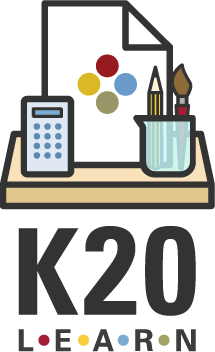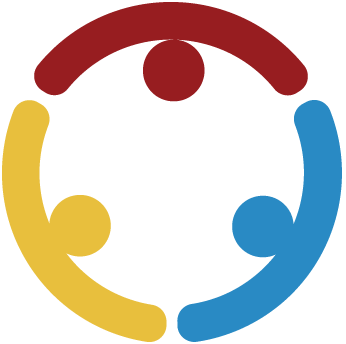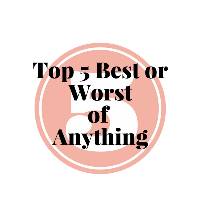Summary
Where is the best place to go on vacation? The worst? What are ways that your students could answer these questions descriptively? In this engaging lesson, students will practice descriptive writing skills by creating uniquely individual "Best/Worst of" lists in e-book format.
Essential Question(s)
What do good writers do to engage and hold their readers' attention?
Snapshot
Engage
Students will brainstorm various "Best/Worst of" lists, identifying what makes them engaging.
Explore
Students will identify a topic about which they want to compose a "Top 5" list and will use a graphic organizer to plan their writing. Students will take their ideas and fill out observation charts on their topics.
Explain
The teacher will facilitate a discussion about what makes a piece of writing engaging for a reader. Students will then apply these ideas to their own "Best/Worst of" lists, creating rough draft paragraphs of each item in their "Top 5," sharing with an Elbow Partner, and making revisions.
Extend
Students will use online tools to create e-books that illustrate their "Best/Worst of" list.
Evaluate
Students will present their e-books to the class. Peers will give specific feedback about the description in the writing.
Materials
Computers with internet access
Projector & audio equipment
Chart paper & markers (optional)
Engage
Introduce the essential question and lesson objective using slides 3–4 in the Lesson Slides. Then display slide 5, ask the students if they’ve ever seen or read any “Best/Worst of” lists, and have the class share out ideas of topics. Compose a few Top 5 (best or worst) lists together as a class (summer activities, field trips, birthday party ideas, etc.). These can be written on chart paper or on the chalkboard.
After creating a few lists as a group, use slide 6 to share some additional text and video examples of Best/Worst lists using some of the links listed below:
Things Siblings Do to Annoy Each Other - https://youtu.be/NCfaxIFqCrs
Best and Worst Cafeteria Foods - https://www.theodysseyonline.com/the-best-and-worst-cafeteria-foods
20 Best Disney Movies of All Time - https://www.redbookmag.com/life/mom-kids/g22559664/best-disney-movies/
Explore
Display slide 7, then give the students 3–5 minutes to brainstorm and decide on a topic about which to create their own “Top 5” (best or worst) list. Remind students that this should be a topic they are interested in and could write about extensively.
Distribute the Your Top 5 handout, display slide 8, and have the students begin by answering the following questions:
Why is your topic important?
What three criteria are you using to determine your list?
How will you engage your audience?
Remind the students that considering these questions will help them come up with rich details that will make their writing interesting and engaging.
While the students are working, circulate the classroom to read what the students have completed and offer suggestions or prompts where needed. After some independent work time, ask for volunteers to share out examples of answers to these guiding questions.
Once the students have finished answering the guiding questions, tell them to list the items for their Best/Worst list in the corresponding numbered boxes on the organizer.
Explain
Refer back to the example lists you used in the Engage section. Using slide 9, model this examination activity for the entire class using one example list, the Best and Worst Cafeteria Foods. Then, using slide 10, have the students lead the discussion for the next list, 20 Best Disney Movies of All Time. Ask the students to specifically consider the writing (text and dialog) and have them identify examples of writing techniques that connect with the reader. Solicit ideas about what good writers do to engage us and hold our attention and write these ideas on the board. Do they use humor? Hyperbole? Imagery? Ideas should include, but are not limited to, the use of humor, specific details such as imagery, descriptions, and facts, as well as simple, concise writing.
Once students have had the chance to brainstorm elements of what makes a “Best/Worst of” list entertaining and engaging, display slide 11 and have them continue filling out the Your Top 5 organizer. They should be completing the descriptive portions of the numbered items.
Next, display slide 12 and ask students to use a separate sheet of paper to write a rough draft of their Top 5 choices. The rough draft should have an introductory paragraph explaining why the topic is important and the criteria used to determine the list, as well as short paragraphs describing each entry on the list. Explain to them that they should use specific techniques, like the ones discussed, to engage their audience.
After students have finished their rough drafts, they may share their writing with an Elbow Partner, who will help them revise for specific details.
Extend
Students will take their revised paragraphs and make them into an e-book. Before saving the e-book to a PDF format, students should confer with their Elbow Partners once more for final revisions and edits. For an example of what a completed "Top 5" e-book might look like, take a look at the attached student example.
To make their e-books, students can follow the instructions on slide 13 for using Google Slides, or they can use other presentation software or online tools such as Canva or Book Creator.
USING GOOGLE SLIDES TO CREATE AN E-BOOK
Students start a new Google Slide presentation.
Ask students to change the dimensions by going to FILE —> PAGE SETUP and setting the page dimensions to 8.5 x 11 inches.
Students can now type in their text, change the background, and add images, videos, or links.
When students are sure their work is how they want it to look, they will select FILE > DOWNLOAD > PDF.
Their work is now ready to publish on a school or class website.
Evaluate
Students will share their work with classmates in a variation of a Gallery Walk. If there are enough devices, students may display their e-books electronically while their classmates move about the room visiting each other's devices. Or, students can present their e-books one at a time to the class. Each student will complete a Two Stars and a Wish review on index cards for each classmate’s presentation. The stars represent specific compliments on the student’s work. The wish is something that could use improvement.
Resources
Boleratz, B. (2016). The best and worst cafeteria foods. Odyssey. https://www.theodysseyonline.com/the-best-and-worst-cafeteria-foods
Bonner, M. (2018). 20 best Disney movies of all time. Redbook. https://www.redbookmag.com/life/mom-kids/g22559664/best-disney-movies/
Buzzfeedviolet. (2015). Things siblings do to annoy each other. YouTube. https://www.youtube.com/watch?v=NCfaxIFqCrs
K20 Center. (n.d.). Book Creator. Tech Tools. https://learn.k20center.ou.edu/tech-tool/610
K20 Center. (n.d.). Canva. Tech Tools. https://learn.k20center.ou.edu/tech-tool/612
K20 Center. (n.d.). Elbow Partners. Strategies. https://learn.k20center.ou.edu/strategy/116
K20 Center. (n.d.). Gallery Walk / Carousel. Strategies. https://learn.k20center.ou.edu/strategy/118
K20 Center. (n.d.) Two Stars and a Wish. Strategies. https://learn.k20center.ou.edu/strategy/83


